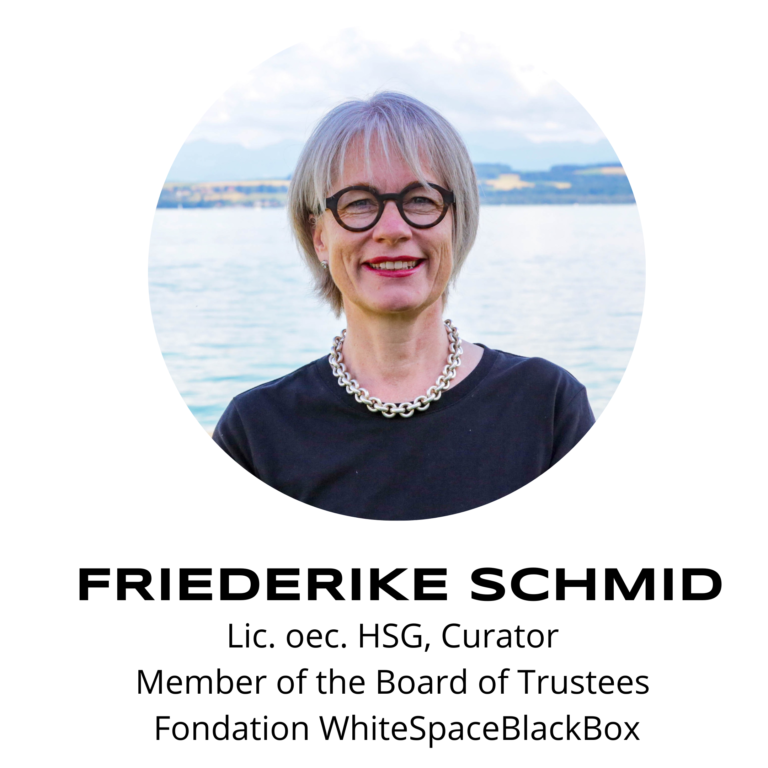
© Work of Nandipha Mntambo «Flight», courtesy of Fondation WhiteSpaceBlackBox
Witches & Bitches – a feminist look into our collection
Very consciously and in a good tradition for Fondation WhiteSpaceBlackBox we chose the edgy title «Witches & Bitches» for our recent exhibition, pointing out, that in the past and today, women always had to go the extra mile.
First, they were not able to practice their profession and second, they were not recognized in a male world. Herewith we want to give this recognition and dedicate our show to some strong female positions within our collection plus two women artist friends.
Witches and bitches are both words, originating from a religious context, where attempts were made to condemn women by means of the power of religion to keep them insignificant. Maria Magdalena, «girlfriend» of Jesus was the first woman, who wavered between canonization and harlotry (bitch). Witches were even exterminated and burned because they were sexually attractive and said to have “superpowers” in healing, childbirth, etc., that could not be explained rationally and therefor frightened men. In Switzerland Anna Göldi in 1782 was the last witch to be burnt in the Kanton of Glarus. Figures across Europe speak of up to a third of the processes, executed against very sensitive men, suffering a similar fate to their female counterparts. But the witch-hunt goes on: In America right now, singer Taylor Swift is being accused as a «satanic witch».
This degradation of women, combined with the fear of their power, began with the emergence of the Christian church. The church since ever was a pure bachelor organization with no women around. Only «virgin» Mary was allowed to be part as an «immaculate» being. Women in church either had to submit themselves and then be the «faithful» sheep who are led by shepherds (only men) or they had no place in this organization. (Uta Ranke Heinemann, the worldwide first professor of catholic theology once said: «As a woman in the Vatican, you can only get to the top with a hoover».)
It characterizes archaic countries in particular, that the fear of strong women is tamed through drastic regulations, again based on religious justifications. In certain Islamic societies f.ex. women must wear different kinds of veils (head veil or body veil) for not to seduce men. In order to be «pure» and therefore allowed to sit at the table with men and be considered for a wedding (and to give the man maximum pleasure), circumcision is still common in some countries.
Back to women in the arts: Until the mid-19th century, they officially were not allowed to attend art schools. Important female artists of the time were often daughters or siblings of artists who learnt their métier within the family (Artemisia Gentileschi, Angelika Kauffmann). However, if it concerned the relationship within an artist couple, history showed, that even there the women were not recognized on an equal footing with their husbands (Sophie Täuber-Arp, Sonia Delaunay-Terk). Women, trying to put an equal energy and power in their work as sculptors or painters, either were «used» as the assistants of their male mentors, serving his work and/or as their mistresses, staying in their shadow all life (Camille Claudel/Auguste Rodin; Gabriele Münter/Wassily Kandinsky). Therefor some deliberately decided not to start a family in order to pursue a career as an artist.
Art history wore male spectacles – women were simply «overseen» and neither exhibited in the same way as their male pendants, nor discussed in treatises, newspapers, or magazines. The criticism was either that the «wrong» materials were used (textile art, everyday materials), that women didn’t have the same depth and objectivity towards art (Meret Oppenheim) or if no other arguments worked, that they were too masculine and dominant (sometimes even wearing men’s clothes and being lesbian) and not submissive enough to male art(ists) as seductive female nudes.
It was only in the middle of the 20th century, with the beginning of the women’s movement, that this slowly began to change. Women started to break through the patterns of society and to draw more attention to themselves and their work by building up their own women’s networks and new judgement schemes.
«Art has no sex – every great human creation is male-female» (Meret Oppenheim). It is not the art, but our judgement system and how we see and evaluate art, that make the difference.
We invite you to see our newest exhibition «Witches & Bitches» with fresh eyes!

